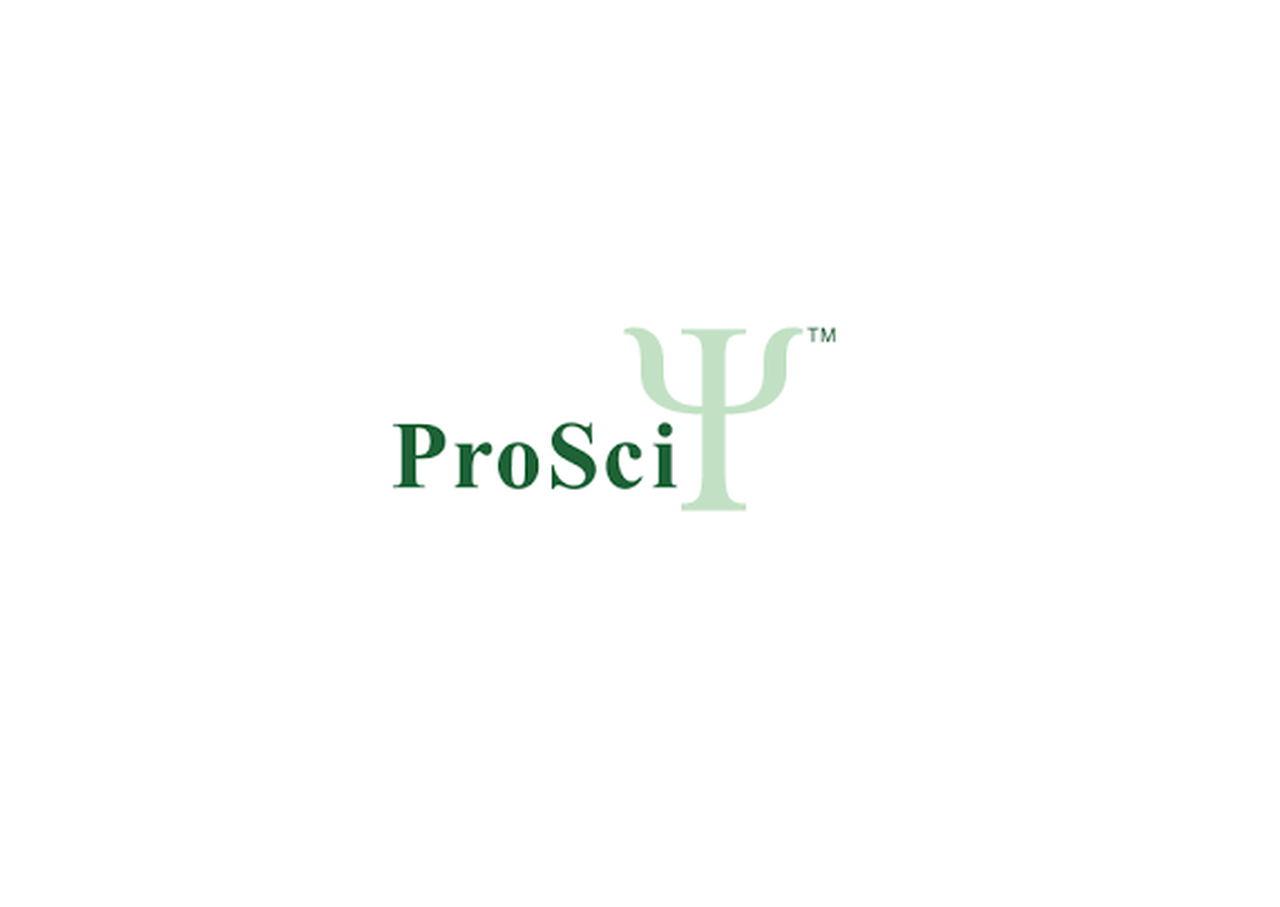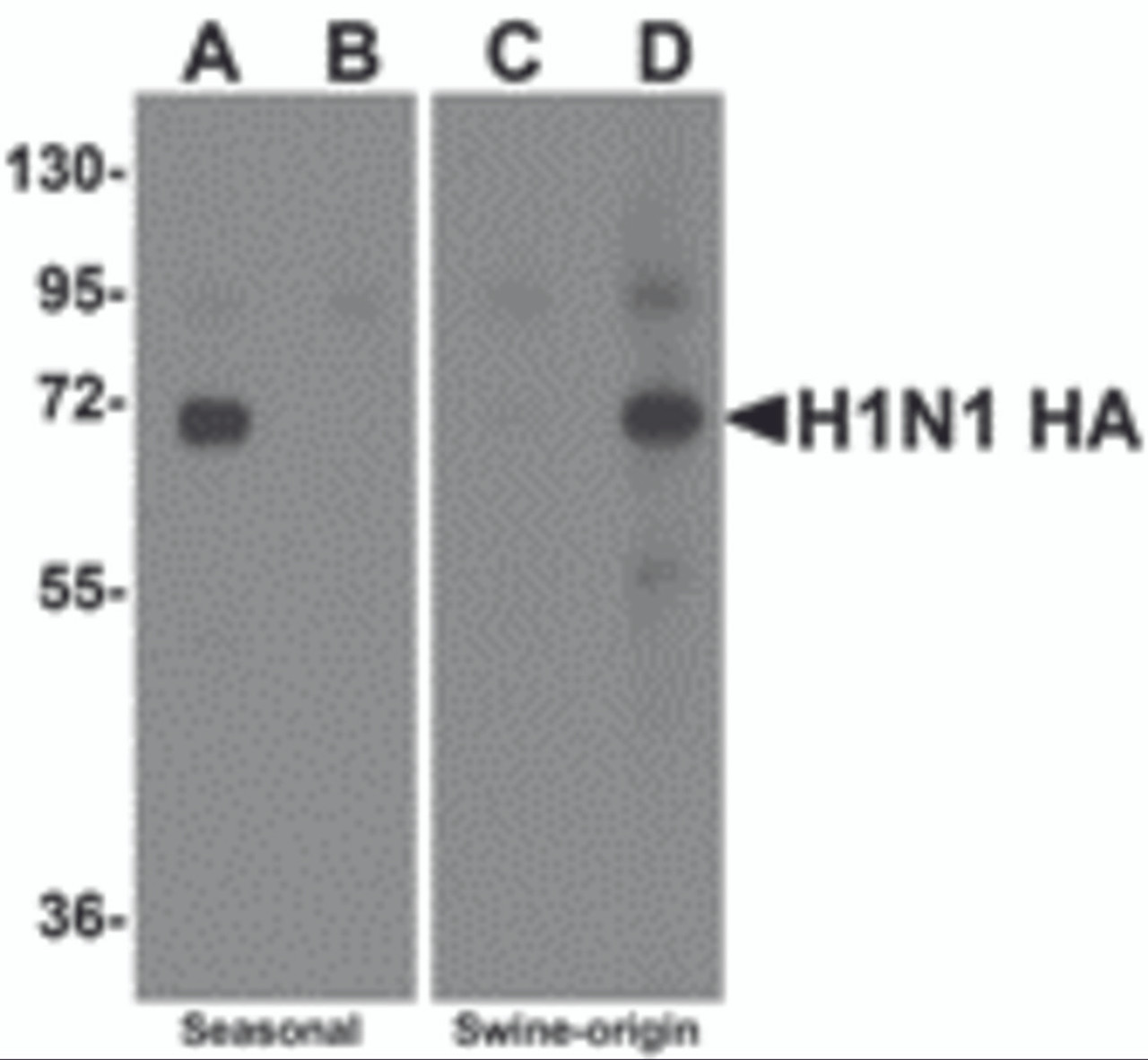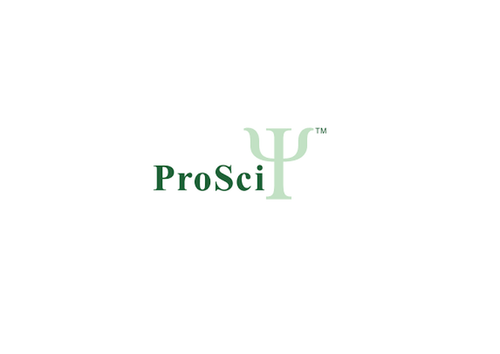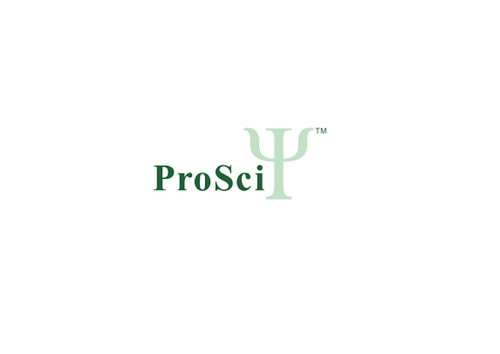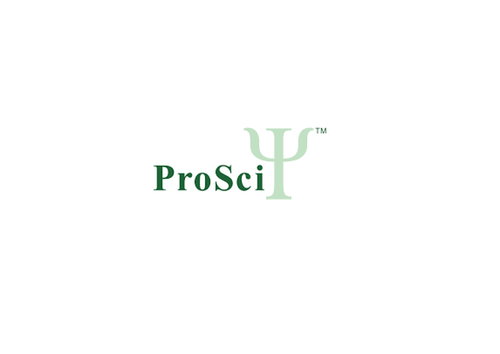Product Description
Swine H1N1 Hemagglutinin Antibody | 5233 | ProSci
Host: Rabbit
Reactivity: Virus
Homology: N/A
Immunogen: Hemagglutinin antibody was raised against a synthetic peptide from the novel swine influenza Hemagglutinin protein.
The peptide sequence is unique from the peptide sequence for product 5237 and 5241.
This antibody is a cognate pair with product 5231.
The immunogen is located within amino acids 120 - 170 of Swine H1N1 Hemagglutinin.
Research Area: Infectious Disease
Tested Application: E, WB
Application: Hemagglutinin antibody can be used for the detection of the Hemagglutinin protein from the H1N1 strain of swine influenza A in Western Blot.
Specificiy: N/A
Positive Control 1: N/A
Positive Control 2: N/A
Positive Control 3: N/A
Positive Control 4: N/A
Positive Control 5: N/A
Positive Control 6: N/A
Molecular Weight: N/A
Validation: N/A
Isoform: N/A
Purification: Swine H1N1 Hemagglutinin Antibody is affinity chromatography purified via peptide column.
Clonality: Polyclonal
Clone: N/A
Isotype: IgG
Conjugate: Unconjugated
Physical State: Liquid
Buffer: Swine H1N1 Hemagglutinin Antibody is supplied in PBS containing 0.02% sodium azide.
Concentration: 1 mg/mL
Storage Condition: Swine H1N1 Hemagglutinin antibody can be stored at 4˚C for three months and -20˚C, stable for up to one year. As with all antibodies care should be taken to avoid repeated freeze thaw cycles. Antibodies should not be exposed to prolonged high temperatures.
Alternate Name: Swine H1N1 Hemagglutinin Antibody:
User Note: Optimal dilutions for each application to be determined by the researcher.
BACKGROUND: Swine H1N1 Hemagglutinin Antibody: Influenza A virus is a major public health threat, killing more than 30, 000 people per year in the USA. In early 2009, a novel swine-origin influenza A (H1N1) virus was identified in specimens obtained from patients in Mexico and the United States. The virus spread quickly around the world and on June 11, 2009, the World Health Organization declared it a pandemic. Influenza A virus has one of sixteen possible Hemagglutinin (HA) surface proteins and one of nine possible Neuraminidase (NA) surface proteins. The Hemagglutinin protein facilitates viral attachment while Neuraminidase is involved in viral release. These proteins also elicit immune responses that prevent infection or independently reduce viral replication. The genetic make-up of this swine flu virus is unlike any other: it is an H1N1 strain that combines a triple assortment first identified in 1998 including human, swine, and avian influenza with two new pig H3N2 virus genes from Eurasia, themselves of recent human origin. The distinct antigenic properties of the new swine virus compared with seasonal influenza A (H1N1) virus suggest that human immunity against new swine influenza virus is limited, although the age distribution of reported cases suggests some degree of protection in older age groups. This antibody is specific for the novel swine influenza Hemagglutinin and will not recognize the corresponding Hemagglutinin sequence from the seasonal H1N1 influenza (A/Brisbane/59/2007 (H1N1) ) .
 Euro
Euro
 USD
USD
 British Pound
British Pound
 NULL
NULL

